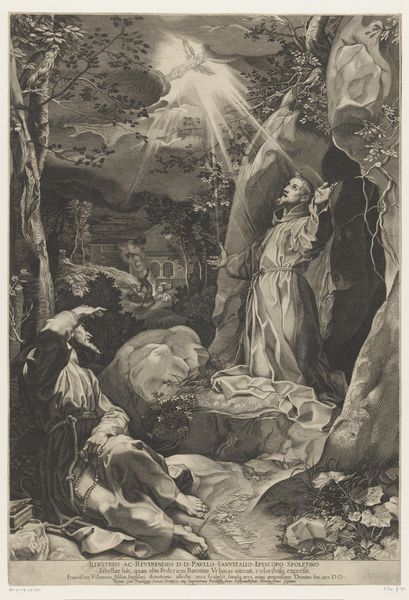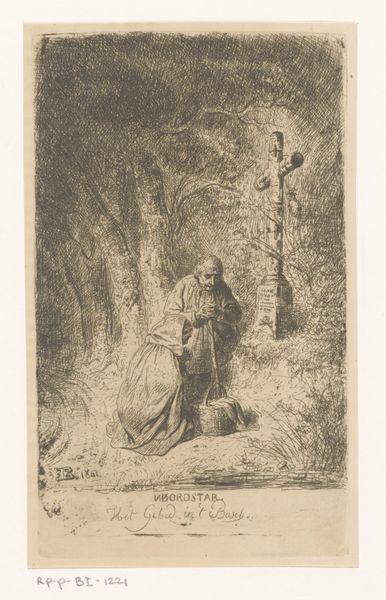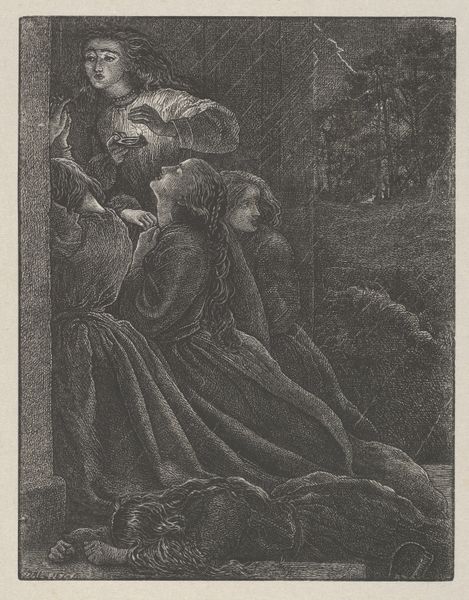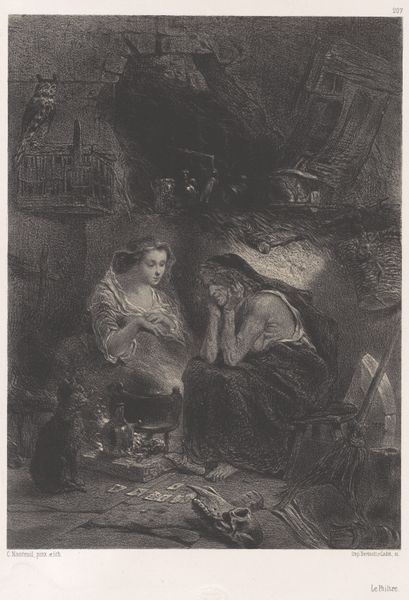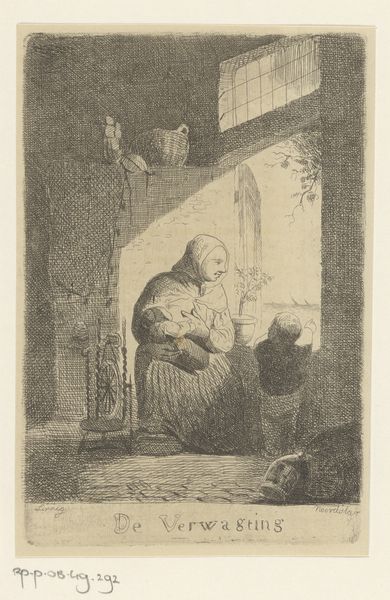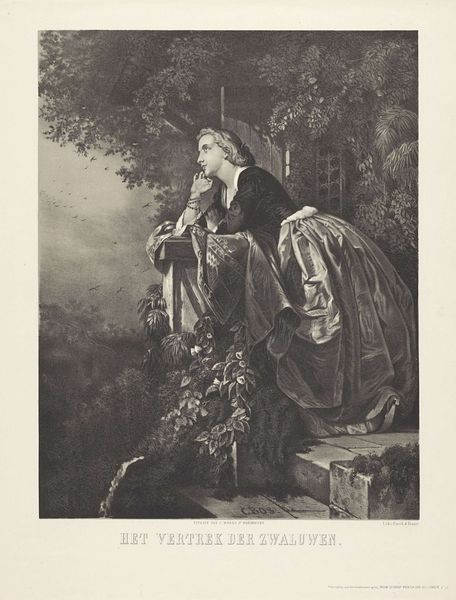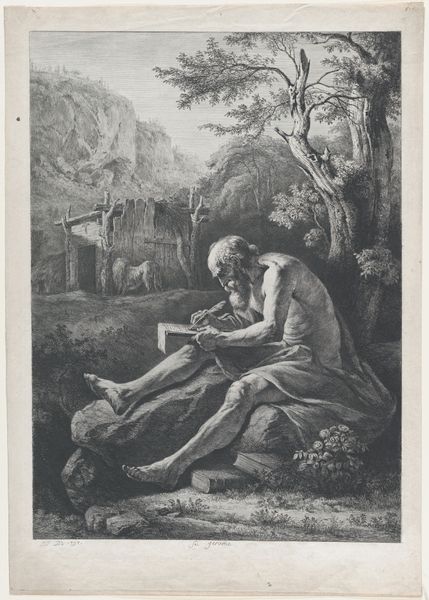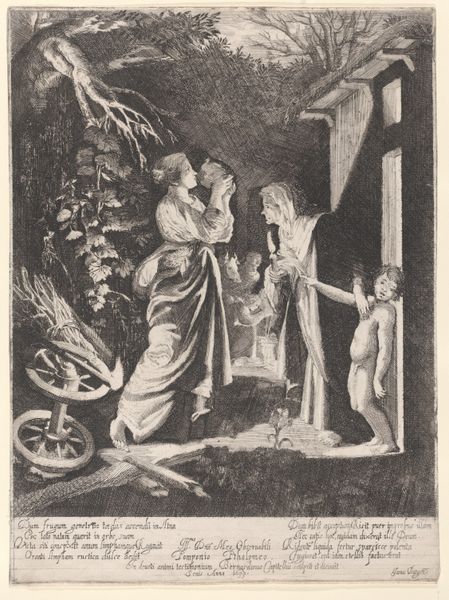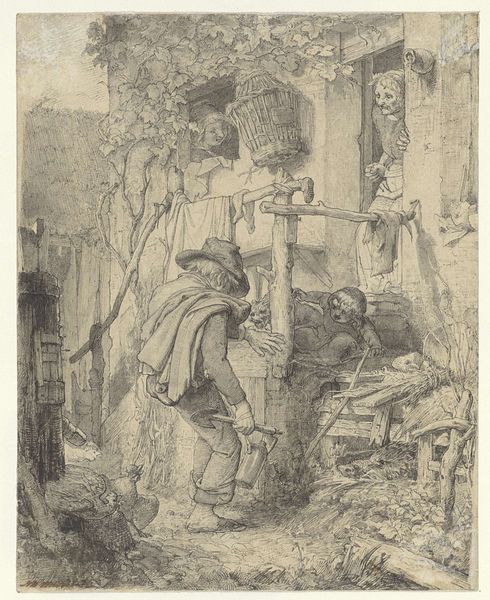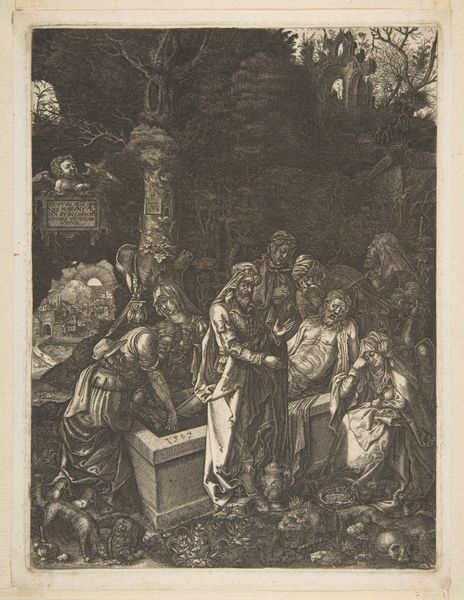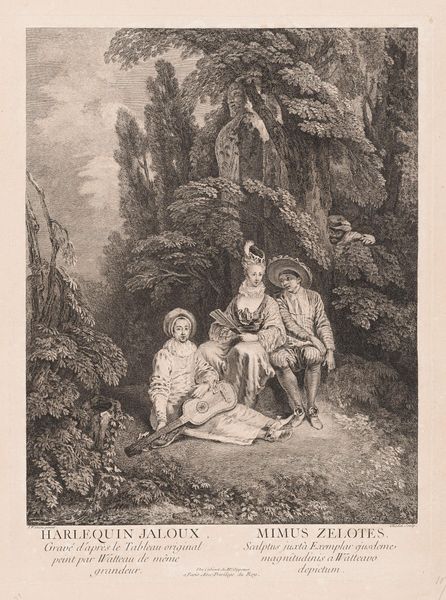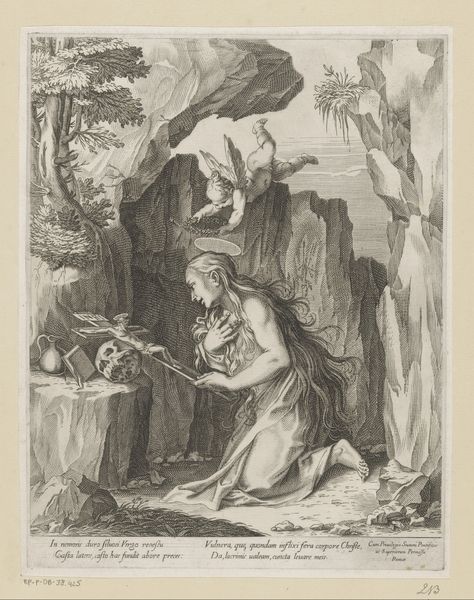
Portrait of Julienne and Watteau in Garden Playing Violincello 1731
0:00
0:00
drawing, print, engraving
#
portrait
#
drawing
#
baroque
# print
#
landscape
#
figuration
#
men
#
genre-painting
#
engraving
Dimensions: Sheet: 16 15/16 × 12 1/4 in. (43 × 31.1 cm)
Copyright: Public Domain
Curator: This engraving, executed by Nicolas Henry Tardieu in 1731, is entitled "Portrait of Julienne and Watteau in Garden Playing Violincello." Editor: My initial response is a sense of dreamlike melancholy. The stark contrast between the figures and the heavily worked background create a surreal juxtaposition. Curator: It's a fascinating image from a historical perspective. Julienne was Watteau’s patron, a wealthy textile manufacturer who supported many artists of the Rococo. And, of course, Watteau, depicted here in an idealised state. Editor: Note the figure of Venus emerging from the trees, above the subjects. It almost appears superimposed onto the organic background, suggesting a level of allegory. The canvas on the right of the engraving also attracts the viewer; unfinished, only vaguely showing an artwork being created. How would you view these compositional techniques and symbols? Curator: Indeed. We must consider that the image operates within the context of patronage, where the patron is essentially immortalized with a cultural luminary such as Watteau. He has been given a position of respect but Julienne has clearly placed himself in the more prominent position of actually playing a tune in their garden. It speaks to their social relationship in this cultural milieu. Editor: I'd be fascinated to see if the unfinished artwork on the canvas could ever be connected to one of Watteau's works! Beyond the thematic elements, I'm struck by the dynamism that has been captured. See how the flow from left to right mirrors the bow-work? It allows the composition to convey action while existing in stillness. Curator: I think it underscores the Baroque sensibility: dramatic, ornamental. Editor: Yes, a style also characterised by complex form. Nicolas Henry Tardieu has brought out something complex here through texture. I’ve been deeply challenged by this portrait’s composition and depth. Curator: I concur. It demonstrates how engravings can not only disseminate images, but also provide insights into the complex power structures that shaped artistic production in the 18th century.
Comments
No comments
Be the first to comment and join the conversation on the ultimate creative platform.
